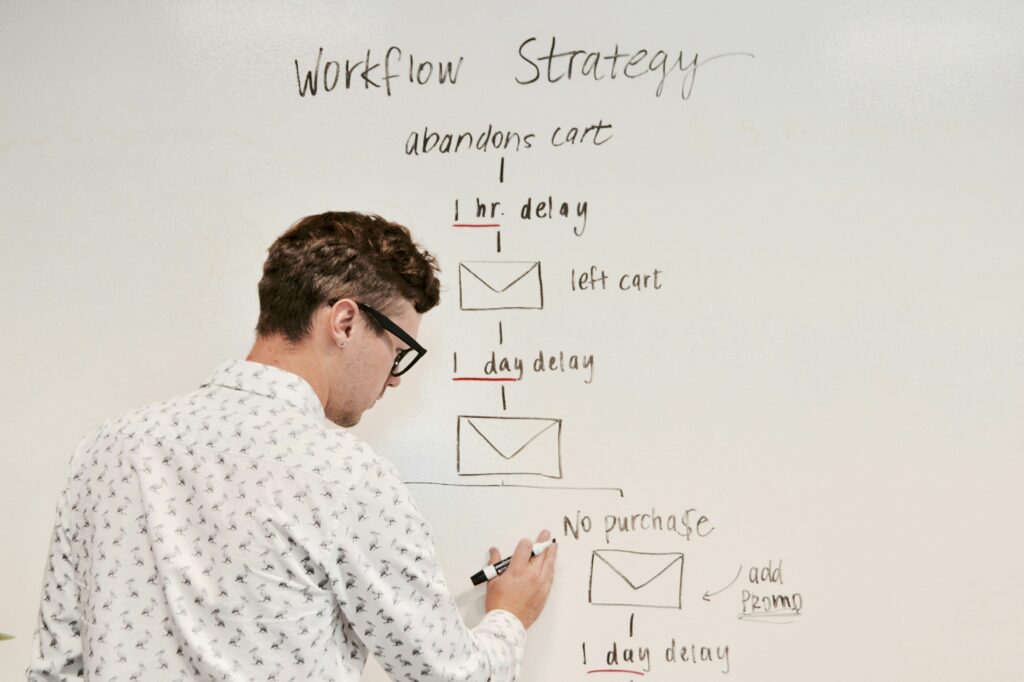
Are you looking to enhance your email marketing campaigns and unlock their full potential? Look no further! In this article, we will explore the most effective email marketing strategies for 2021 that are guaranteed to bring your campaigns to the next level. From personalization techniques to automation and segmentation, we will provide you with invaluable insights and tips to help you succeed in this ever-evolving digital landscape. Get ready to tap into the power of email marketing and maximize your reach and engagement with your audience. Let’s dive in!

Affiliate Marketing Academy – Get it here
Understanding Email Marketing
Definition of email marketing
Email marketing is a powerful digital marketing strategy that involves sending targeted messages and promotional content to a group of individuals via email. It allows businesses to communicate directly with their audience, build relationships, and drive engagement. The goal of email marketing is to not only attract and retain customers but also to convert prospects into paying customers and encourage repeat purchases.
Why email marketing is important
Email marketing is an essential tool in every marketer’s arsenal for several reasons. Firstly, it allows businesses to reach their audience directly in their personal inbox, giving them a higher chance of being seen and read. Secondly, email marketing has a high return on investment (ROI) compared to other marketing channels. According to recent studies, for every dollar spent on email marketing, the average ROI is $44.25. Additionally, email marketing allows businesses to personalize their messages and tailor their content according to the needs and preferences of their subscribers, fostering a sense of connection and trust.
Benefits of email marketing
Email marketing offers numerous benefits that can significantly impact a business’s success. One of the main advantages is its cost-effectiveness. Compared to traditional marketing methods like print or TV ads, email marketing is more affordable and accessible for businesses of all sizes. Additionally, email marketing allows for precise targeting and segmentation, enabling businesses to send the right message to the right people at the right time. This ensures that subscribers receive relevant content that resonates with their interests, increasing the likelihood of engagement and conversions. Furthermore, email marketing provides measurable results, allowing businesses to track email open rates, click-through rates, conversions, and other key metrics to assess campaign success and make data-driven decisions.
Building an Email List
Creating a compelling opt-in offer
To build an effective email list, it is crucial to provide a compelling opt-in offer that entices potential subscribers to sign up. An opt-in offer can be anything from an exclusive discount or a free e-book to a webinar or access to premium content. The key is to offer something of value to your target audience in exchange for their email address. Make sure your opt-in offer is clear, prominently displayed on your website or landing page, and highlights the benefits that subscribers will receive by joining your email list.
Using lead magnets to attract subscribers
Lead magnets are valuable resources or incentives designed to attract subscribers to your email list. They can be in the form of e-books, checklists, templates, or video tutorials that address a specific pain point or provide valuable information. By offering lead magnets, you can capture the attention and interest of your target audience, making them more likely to subscribe. When creating lead magnets, it is essential to focus on quality and relevance to ensure that subscribers see the value in exchanging their email address for the resource you are providing.
Optimizing landing pages for conversions
To maximize your email list growth, it is crucial to optimize your landing pages for conversions. A well-designed landing page should be visually appealing, clearly state the benefits of subscribing to your email list, and include an easy-to-use opt-in form. Keep the form short and straightforward, asking for only essential information like name and email address. Additionally, consider incorporating social proof and testimonials on your landing page to build trust and credibility. Regularly monitor and analyze your landing page’s performance to identify areas for improvement and make data-driven decisions to enhance your conversion rates.
Affiliate Marketing Academy – Check it out
Crafting Engaging Emails
Knowing your audience
The key to crafting engaging emails is understanding your audience. Take the time to define and segment your subscriber list based on demographics, interests, and previous interactions with your brand. This will allow you to create personalized and targeted content that resonates with your audience. Conduct market research, analyze customer data, and gather insights to gain a deep understanding of your subscribers’ preferences, pain points, and motivations. By tailoring your emails to address their specific needs and interests, you can increase engagement and foster stronger relationships with your subscribers.
Writing compelling subject lines
Subject lines play a crucial role in determining whether your emails will be opened or left unopened in the recipient’s inbox. To craft compelling subject lines, it is essential to be concise, clear, and intriguing. Use action words, personalization, and urgent language to capture your subscribers’ attention and convey the value they will receive by opening your email. Avoid using spammy or misleading subject lines, as they can harm your reputation and decrease open rates. Regularly test different subject lines to understand what resonates best with your audience and use the data to refine your email marketing strategy.
Using personalization to increase engagement
Personalization is a powerful strategy that can significantly increase email engagement. By addressing your subscribers by their first name or including customized content based on their interests or purchase history, you can create a sense of individualized attention and relevance. Use email marketing platforms that allow for dynamic content insertion to automate personalization at scale. Additionally, segment your email list based on different characteristics and behaviors to target specific groups with tailored content. Personalization not only enhances engagement but also improves click-through rates, conversions, and overall customer satisfaction.
Segmentation and Targeting
Benefits of segmenting your email list
Segmenting your email list is crucial for delivering personalized and targeted content to your subscribers. By dividing your subscribers into distinct segments based on demographics, interests, behavior, or purchase history, you can ensure that each group receives relevant and highly tailored emails. This leads to higher engagement, increased conversions, and improved customer satisfaction. Furthermore, segmentation allows you to better understand your audience and analyze their behavior, preferences, and needs, enabling you to refine your marketing strategies and optimize campaign performance.
How to segment your subscribers
Segmenting your subscribers can be done based on various criteria, depending on your business and industry. Common segmentation factors include demographics (age, location, gender), psychographics (interests, hobbies, values), purchase behavior (frequency, average order value), and engagement level (open rates, click-through rates). To effectively segment your subscribers, start by collecting the necessary data through sign-up forms, user surveys, or purchase history. Use email marketing software or customer relationship management (CRM) tools to organize and segment your subscribers based on the collected data.
Targeting different customer segments with tailored content
Once you have segmented your subscribers, it is essential to craft tailored content that speaks directly to each customer segment. Create email campaigns that address the specific needs, interests, and pain points of different groups. For example, if you have a segment of customers who have recently made a purchase, send them follow-up emails with product recommendations or exclusive discounts to encourage repeat purchases. On the other hand, if you have a segment of subscribers who are still in the consideration phase, provide them with educational content and testimonials to build trust and prompt them to take the next step in their buyer’s journey. By tailoring your content to different segments, you can deepen customer relationships and drive higher conversion rates.

Automation and Drip Campaigns
Introduction to automation in email marketing
Automation in email marketing refers to the use of technology and predefined workflows to send targeted, timely, and personalized emails to subscribers based on specific triggers or actions. Automation allows businesses to streamline their email marketing efforts, save time, and deliver relevant content automatically. Common automation workflows include welcome emails for new subscribers, abandoned cart reminders, birthday or anniversary emails, and post-purchase follow-ups. By utilizing automation, businesses can nurture leads, build relationships, and drive conversions without the need for manual intervention.
Setting up drip campaigns for lead nurturing
Drip campaigns are a series of automated emails that are sent at predetermined intervals to provide valuable information, nurture leads, and guide subscribers through their buyer’s journey. These campaigns are designed to maintain engagement and build trust with subscribers over time. Start by mapping out your drip campaign sequence, determining when and what type of content to send at each stage. For example, a typical drip campaign may include a welcome email followed by educational emails, product recommendations, and promotional offers. Use automation tools to set up the drip campaign and ensure that emails are triggered based on specific user actions or time intervals.
Maximizing customer retention through automated workflows
Automation workflows can be invaluable in maximizing customer retention. By sending automated emails to existing customers, you can maintain engagement, nurture loyalty, and encourage repeat purchases. For example, after a customer completes a purchase, you can set up an automated workflow to send a post-purchase follow-up email to thank them for their purchase, provide order details, and offer relevant cross-sell or upsell suggestions. Additionally, you can set up automated re-engagement campaigns to target inactive subscribers and encourage them to re-engage with your brand. By leveraging automation to stay connected with your customers, you can foster long-term relationships and increase customer lifetime value.
Mobile Optimization
The importance of responsive email design
With the increasing use of mobile devices, it is crucial to optimize your email marketing campaigns for mobile users. Responsive email design ensures that your emails are displayed correctly and offer a seamless user experience on different devices and screen sizes. Mobile optimization is essential because a significant percentage of subscribers open emails on smartphones or tablets. If your emails are not mobile-friendly, they may appear distorted, difficult to read, or unappealing, leading to high bounce rates and low engagement. By adopting a responsive design approach, you can guarantee that your emails look professional and are accessible across all devices, resulting in improved open rates, click-through rates, and overall user satisfaction.
Best practices for mobile-friendly emails
To create mobile-friendly emails, there are several best practices to follow. Firstly, use a single-column layout to ensure easy scrolling and optimal display on mobile devices. Avoid using small font sizes or tiny buttons that can be difficult to click on mobile screens. Instead, use larger fonts and buttons that are easily tappable. Optimize your images for mobile by compressing them and ensuring they are appropriately sized. Design your emails with a clean and streamlined aesthetic, eliminating unnecessary elements that may clutter the mobile view. Finally, always test your emails on different devices and email clients to ensure that they render correctly and provide a satisfactory user experience.
Testing and optimizing for different devices
To ensure the best user experience across various devices, it is crucial to test and optimize your emails for different screen sizes and email clients. Start by investing in email testing tools and email preview services that allow you to see how your emails will appear on different devices and email platforms. Test your emails on popular smartphones, tablets, and email clients like Gmail, Outlook, and Apple Mail. Pay attention to the rendering of your email templates, the alignment of images and text, and the overall usability on each device. Make necessary adjustments to your design and layout to enhance compatibility and optimize your emails for a seamless experience.

Measuring Success with Analytics
Key email marketing metrics to track
Tracking and analyzing your email marketing metrics is essential for evaluating the success of your campaigns and making data-driven decisions. Key metrics to track include:
- Open rate: The percentage of recipients who open your email. This metric indicates the effectiveness of your subject lines, sender reputation, and email content.
- Click-through rate (CTR): The percentage of recipients who click on a link in your email. CTR measures the engagement and interest generated by your email content and calls-to-action.
- Conversion rate: The percentage of recipients who complete the desired action (e.g., making a purchase, filling out a form) after clicking on a link in your email. Conversion rate helps assess the effectiveness of your email in driving desired outcomes.
- Bounce rate: The percentage of emails that were not successfully delivered to recipients. A high bounce rate may indicate issues with your email list quality or deliverability.
- Unsubscribe rate: The percentage of recipients who unsubscribe from your email list after receiving an email. Unsubscribe rate helps gauge subscriber satisfaction and the effectiveness of your email content and frequency.
Using A/B testing to optimize performance
A/B testing, also known as split testing, is a valuable technique for optimizing your email marketing performance. A/B testing involves sending two or more versions of an email to different segments of your audience and analyzing the results to determine which version performs better. To conduct A/B tests, identify a single variable to test, such as subject lines, email content, or call-to-action buttons. Split your audience into random segments and send different versions of your email with the variable being tested. Measure the performance of each version by tracking key metrics and use the data to determine the winning version. A/B testing allows you to continuously improve your email marketing strategies and optimize your campaigns for better results.
Interpreting and analyzing email campaign data
Interpreting and analyzing email campaign data is crucial for understanding the effectiveness of your email marketing efforts and making data-driven decisions. Start by regularly reviewing your email marketing metrics and comparing them to your goals and benchmarks. Look for patterns and trends in the data, such as which subject lines generate higher open rates or which calls-to-action result in more conversions. Analyze the performance of different segments of your audience and identify areas where you can make improvements. Use email marketing software or analytics tools to generate reports and visualize your data effectively. Regular analysis of your email campaign data allows you to identify areas for optimization, refine your strategies, and achieve better results.
Deliverability and Spam Compliance
Tips for avoiding the spam folder
To ensure your emails reach the intended recipients’ inbox and avoid being flagged as spam, follow these best practices:
- Build a quality email list: Only send emails to subscribers who have explicitly opted in to receive communications from you. Avoid purchasing or using third-party email lists.
- Use a reputable email service provider (ESP): Choose an ESP with a good reputation for deliverability. Reputable ESPs have strong relationships with major email clients and can help ensure your emails are delivered.
- Monitor your sender reputation: Regularly check your sender reputation using tools like Sender Score or similar services. Maintain a good sender reputation by maintaining low bounce rates, high open rates, and low spam complaints.
- Implement double opt-in: Require subscribers to confirm their email address after signing up to ensure you have permission and accurate contact information.
- Use a clear sender name and email address: Make sure your recipients can easily recognize you as the sender. Avoid using generic or misleading sender names and email addresses.
- Craft relevant and engaging content: Sending valuable and relevant content to your subscribers reduces the likelihood of your emails being marked as spam. Avoid using excessive promotional language or misleading claims.
- Monitor email engagement metrics: Maintain high engagement rates by monitoring open rates, click-through rates, and unsubscribe rates. Low engagement rates can negatively affect your deliverability.
Optimizing for high deliverability rates
To optimize your email deliverability rates, consider implementing the following strategies:
- Authenticate your emails: Use authentication protocols like Sender Policy Framework (SPF), DomainKeys Identified Mail (DKIM), and Domain-Based Message Authentication, Reporting, and Conformance (DMARC) to verify your emails. Authentication helps email clients trust your emails and reduces the chances of them ending up in the spam folder.
- Maintain a clean email list: Regularly clean your email list by removing inactive or bouncing email addresses. High bounce rates and spam complaints can harm your deliverability rates.
- Segment your email list: Segmenting your email list allows you to send targeted and relevant content to specific groups of subscribers. This improves engagement and reduces the chances of your emails being marked as spam.
- Monitor deliverability metrics: Keep an eye on important deliverability metrics, such as delivery rates, bounce rates, and spam complaint rates. Identify and address any issues promptly to maintain a healthy deliverability rate.
- Respect unsubscribe requests: Honor unsubscribe requests immediately. Failing to do so can lead to spam complaints, which negatively impact deliverability rates.
- Regularly monitor and optimize email content: Avoid using spam trigger words or phrases, excessive punctuation, or misleading subject lines. Continuously optimize your email content to comply with spam regulations and increase deliverability.
Ensuring compliance with email regulations
Complying with email regulations is essential to maintain a positive sender reputation, protect subscriber privacy, and ensure legal compliance. Here are some key regulations to consider:
- CAN-SPAM Act (United States): This law establishes rules for commercial email messages, including the requirement to include a clear and accurate sender name, a valid physical address, and a functioning unsubscribe mechanism.
- General Data Protection Regulation (GDPR) (European Union): GDPR regulates the collection, storage, and use of personal data of individuals in the European Union. It requires businesses to obtain explicit consent for email communications, provide clear privacy policies, and allow individuals to easily unsubscribe.
- Canada’s Anti-Spam Legislation (CASL) (Canada): CASL prohibits sending commercial electronic messages without prior consent, including explicit opt-in consent. It requires accurate identification of senders and providing an easy unsubscribe mechanism.
- Australian Spam Act (Australia): This act regulates unsolicited commercial electronic messages and requires consent from recipients, accurate sender information, and a functioning unsubscribe mechanism.
Ensure compliance with these regulations by understanding the specific requirements, implementing appropriate opt-in mechanisms, maintaining accurate and up-to-date contact information, and respecting subscriber preferences. Regularly review and update your privacy policies and terms of service, and seek legal advice when needed.
Personalization and Dynamic Content
Using customer data to personalize email content
Personalization is a powerful strategy for creating meaningful and relevant email content. By leveraging customer data and preferences, you can tailor your emails to meet individual needs. Start by collecting customer data through sign-up forms, surveys, or interactions with your website or app. This data can include demographics, purchase history, browsing behavior, or preferences. Use email marketing software or customer relationship management (CRM) tools to store and manage customer data effectively. With this information, you can customize your emails with personalized recommendations, relevant offers, or exclusive content. Personalized emails not only foster a sense of individualized attention but also enhance engagement, click-through rates, and conversions.
Dynamic content strategies for improved engagement
Dynamic content allows you to create personalized and engaging emails that adapt to each subscriber’s unique characteristics or behavior. By using dynamic content, you can display different images, offers, or text based on predefined rules or customer attributes. For example, you can showcase products or offers based on the recipient’s previous purchases or browsing history. Dynamic content can also be used to display different content based on location, language preference, or subscription type. By providing content that is specifically relevant to each subscriber, you can increase engagement, encourage click-throughs, and drive conversions. Use email marketing software or CRM tools that support dynamic content to implement these strategies effectively.
Creating targeted offers based on customer behavior
Targeted offers based on customer behavior can significantly boost engagement and drive conversions. By analyzing customer behavior, such as browsing history, purchase history, or cart abandonment, you can deliver customized offers that align with their interests and preferences. For example, if a customer has repeatedly shown interest in a particular product category, you can send them personalized recommendations or exclusive discounts for that category. If a customer has abandoned their shopping cart, you can send them a reminder email with a time-sensitive offer to incentivize them to complete their purchase. By leveraging customer behavior insights, you can create targeted offers that resonate with your audience and enhance the chances of conversion.
Testing and Optimization
Different types of email tests to conduct
Testing different elements of your email campaigns is crucial for optimizing your email marketing performance. Here are some common types of email tests you can conduct:
- A/B testing: Test variations of email subject lines, content, calls-to-action, or design to identify the most effective elements.
- Multivariate testing: Test multiple elements simultaneously to analyze their combined impact on email performance. This includes testing different subject lines, email content, and call-to-action buttons.
- Time and day testing: Test different send times and days of the week to determine the optimal timing for higher open rates and click-through rates.
- Segmentation testing: Test the effectiveness of different audience segments by sending targeted emails to specific groups and measuring their engagement and conversion rates.
- Device and email client testing: Test how your emails render on different devices, email clients, and screen sizes to ensure a consistent experience for all subscribers.
Optimizing email elements for better results
Optimizing email elements involves making data-driven decisions based on the results of tests and analyses. Here are some areas to focus on for better email results:
- Subject lines: Continuously test and refine your subject lines to improve open rates. Experiment with different lengths, personalization, emojis, or action-oriented language.
- Email content: Test different content formats, lengths, and visual designs to determine what resonates best with your audience.
- Call-to-action (CTA) buttons: Test different wording, colors, sizes, and placements of your CTAs to increase click-through rates.
- Design and layout: Optimize your email design for readability, visual appeal, and clear hierarchy. Use a clean and responsive design that adapts well to different devices.
- Timing and frequency: Test different send times and frequencies to determine when your audience is most responsive and receptive to your emails.
- Personalization: Test the impact of personalized content, recommendations, or offers on engagement, conversion rates, and customer satisfaction.
- Email length: Test the effectiveness of long-form versus short-form emails to determine what works best for your audience.
Regularly analyze the results of these optimizations and make incremental improvements based on the data to continuously enhance your email marketing performance.
Continuous improvement through testing and analysis
Continuous improvement is the key to successful email marketing. By regularly conducting tests and analyzing data, you can identify areas for improvement, uncover insights, and refine your strategies. Develop a testing and analysis schedule to ensure consistent optimization. Use email marketing software or analytics tools to track and monitor your key metrics effectively. Analyze the results of your tests, compare different versions or segments, and identify trends and patterns. Apply the knowledge gained from your analysis to make data-driven decisions and iterate on your email marketing campaigns. By continuously learning and adapting, you can optimize your email marketing efforts, improve engagement and conversions, and achieve long-term success.
In conclusion, email marketing is a powerful tool for businesses to connect with their audience, drive engagement, and boost conversions. By understanding the key strategies and best practices outlined in this article, you can build an effective email list, craft engaging emails, segment and target your audience, leverage automation, optimize for mobile, measure success through analytics, ensure deliverability and compliance, personalize content, and continuously test and improve your campaigns. Embrace the power of email marketing, and unlock the full potential of this versatile and impactful marketing channel.